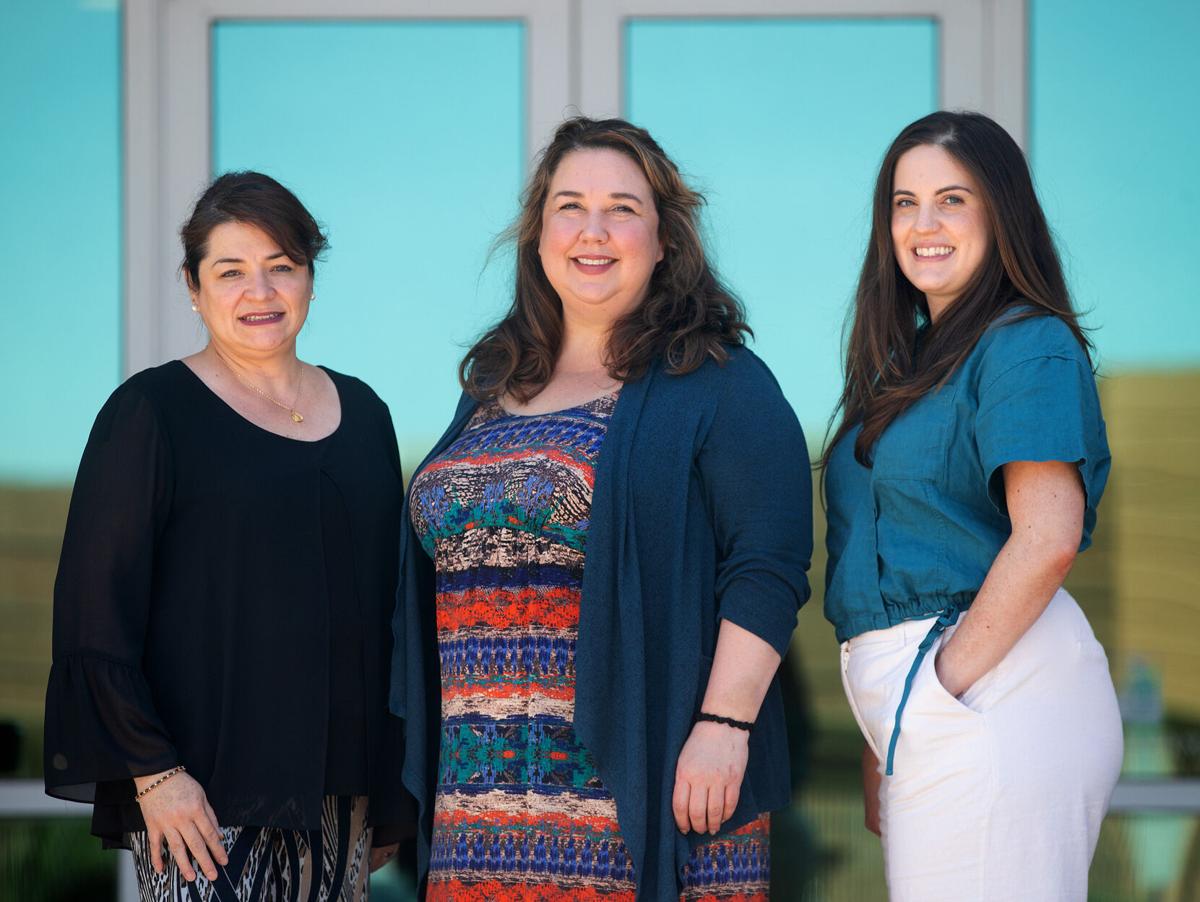A new Tucson-based ASU program provides training and support for frontline public health workers who work outside a traditional medical setting but have a deep understanding of the communities they serve.
Community health workers are typically trusted community members, a relationship that enables them to serve as a link between and help facilitate access to health and social services, says the American Public Health Association.
Arizona State University’s Office of Community Health, Engagement, and Resiliency says community health workers are a promising way to deliver health and mental health services, especially among Black, American Indian and Hispanic communities.
They can also work with uninsured and underinsured people or those who may be wary of the health-care system due to socioeconomic factors, immigration status or other issues.

Research shows the Southwest has high rates of concentrated poverty, a prevalence of adverse childhood experiences, and documented gaps in family resilience during difficult times, says Bianca Levario, the ASU program’s coordinator.
Family resilience is the ability to maintain or return to effective functioning after traumatic events. Resilience varies depending on factors, including challenges from current stressors, the level of pre-existing stress and everyday hassles, the family’s coping skills and the resources available from family members and community sources, according to the National Child Traumatic Stress Network.
“Arizona has the highest percentage of rural children living in concentrated poverty, at 30% or more compared to the 11% nationally,” Levario said. “It’s home to about 56,000 American Indian children. We work closely with the tribes, as that’s kind of one the concentrated populations that we’re trying to target.”
‘We connect those gaps’
ASU’s Office of Community Health, Engagement, and Resiliency was started in 2019 with the Thrive in the ’05 Community-Based Crime Reduction Initiative, which targets a 2.6-square-mile area of Tucson that’s loosely bounded by Miracle Mile to the north, Speedway to the south, Stone Avenue to the east and I-10 to the west.
That 85705 ZIP code area includes neighborhoods considered among Tucson’s most distressed due to poverty, high unemployment and scant resources.
The office, housed in the School of Social Work, branched out from there and in 2020, received a grant from the Substance Abuse and Mental Health Services Administration to address social issues and promote resiliency in the U.S. Southwest through 2026.
Community health worker Nury Stemple was hired as a consultant by ASU in December, bringing to the program her 25 years of experience.
“We are the liaison between the medical providers, social workers and the community,” Stemple said. “The community trusts us because we are a part of them.”
Stemple said community health workers save government and taxpayer dollars. They also supplement the state’s health-care system, which she called underfunded.
She used the analogy of a newly diagnosed diabetic spending five minutes with a doctor who tells them to change their diet and start a new medication. For many people, they know what next steps to take, but for people with transportation or language barriers, or just a lack of education and understanding, there are no next steps unless they get help.
“We are there for them, we’re the one that goes to the client and tells them how to eat (well) and refers them to resources,” she said. “We are full of resources for them and we can follow up.”
Community health workers can also help patients keep track of their appointments and care and help them advocate for themselves with providers.
Their involvement often results in improved primary care for the patient — who is often uninsured or underinsured — and fewer trips to urgent care or the emergency room, Stemple said.
“We connect those gaps between the patient or the client to the community resources,” she said. “We are pretty much social workers, but we don’t have the title. We are health educators. We don’t have the title of nutritionist, but we have the knowledge, the training and the experience.”
Preventative care success
There is evidence community health workers improve access to health care and increase patient knowledge and healthy behaviors, says County Health Rankings, an annual study conducted by the Robert Wood Johnson Foundation and the University of Wisconsin Population Health Institute.
It says health effects appearing strongest for preventive care interventions focused on cardiovascular disease, diabetes and screening for cancer or other diseases.
Community health worker intervention has been shown to improve health among individuals from minority groups and in communities with limited resources, reducing disparities in health outcomes and enhancing health equity, the study finds.
By reaching people within their communities, the workers improve access to care for patients who may not otherwise seek or receive care, including older adults from ethnic minority populations or with complex health conditions, it says.
In Pima County, community health workers are employed by a handful of organizations, including the Pima County Health Department, El Rio Healthcare, Banner University Medical Center (where they’re called navigators) and the University of Arizona, which calls the position community health educators.
Stemple said the health-care system should recognize community health workers as medical professionals and include them.
The workers don’t just assist in medical and social service issues but also can help with problems involving education or legal issues, she said.
Her goal is to improve their salaries, conditions and recognition.
“I have experience in a lot of areas as a community health worker,” Stemple said. “But a lot of clinics, they don’t hire these types of professionals and they’re lacking of this valuable resource they can have in their organization for people who are struggling with all this.”
Navigating mental health
Training by ASU places emphasis on cultural relevance, appropriateness, effectiveness and sustainability.
The new Center for Resilient Communities program includes a toolkit and certificate program on topics including trauma, toxic stress, trainings and webinars that can be accessed on-demand.
“It’s early prevention. Being able to help them in these early stages when they’re working with families and help them navigate the mental health world,” Levario said.
The goal is to create a workforce of community health workers who realize the widespread impact of trauma, recognize its signs and symptoms, understand paths for recovery and integrate that knowledge into care while actively avoiding re-traumatization, said OCHER curriculum design and training specialist Taylor Dominguez.
“Secondary traumatic stress (is another topic we’re looking into) and how community health workers can focus on their own self-care, knowing that they are the frontline public health workers and are really experiencing a lot of trauma secondhand,” Dominguez said.
Topics of recent webinars included mental health resiliency, navigating grief, and protecting children from the health effects of early adversity.
OCHER is also taking part in a U.S. Centers for Disease Control effort to evaluate a program to support community health workers in COVID responses and in broader social determinants of health, or the conditions in which people live, work, play, and access care.
“When COVID started, community health workers were an essential part in pushing the COVID vaccines, educating people in the community and going to the vulnerable communities,” Stemple said.
“A story that a (community health worker) had mentioned to us,” Dominguez said, “was there was a patient going through the medical system and told their doctor, ‘I like you, but she gets me.’”
Get a roundup of solutions reporting from the Arizona Daily Star at linktr.ee/starsolutions. Video by Caitlin Schmidt / Arizona Daily Star.






